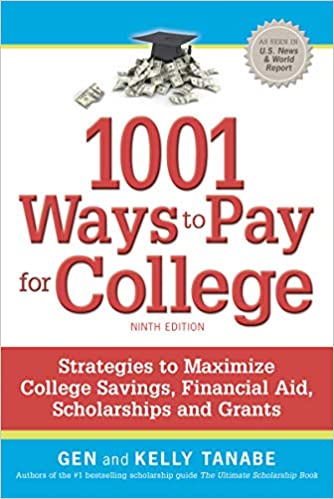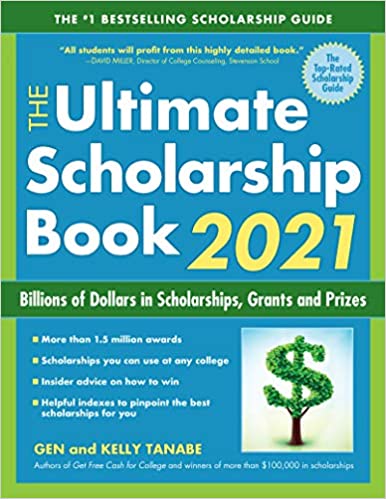4
Know how colleges treat your EFC.
Once you know your Expected Family Contribution, it's easy to determine your financial need. All you do is take the total cost of attending a specific college—including tuition, room and board, books and travel expenses—and subtract it from your Expected Family Contribution. The difference is your financial need. It's important to remember that individual schools, not you, determine the total cost of attending college. You can usually find a school's total cost of attendance on their web site.
Let's look at an example: Assume that your college costs $25,000 per year for tuition and room and board. Add the average expenses for books, travel and miscellaneous expenses, estimating this to be $5,000. This makes the total cost of attendance $30,000 per year. You have submitted both the FAFSA and PROFILE forms. This means that the college has received your Expected Family Contribution as determined by Federal and Institutional Methodology. For argument's sake, let's assume that the Federal Methodology formula placed your Expected Family Contribution at $15,000. According to Institutional Methodology, it is $16,000. (Remember that Institutional Methodology is usually stricter.) If the school only uses the Federal Methodology formula, it will take the $30,000 for the total cost of attendance and subtract the $15,000 that your family is expected to contribute. That leaves your family with a financial need of $15,000. If the school is a private college that uses Institutional Methodology, your financial need is $14,000 since $30,000 - $16,000 = $14,000.
It is this amount—your financial need—that the school must now help your family find a way to afford. They can give you money in the form of grants, student loans and work-study. Or it is possible that the school won't be able to find all of the money, leaving you with what is termed "unmet need." The exact composition of your financial aid package will depend on a variety of factors and will vary by college. This is one benefit of applying to a number of colleges so that you can compare different financial aid packages.
5
Parents should keep their children poor.
Now that you know how the EFC is used to determine your financial need and therefore what the school is likely to award, the next question is this: Can you do anything to lower your EFC? After all, the lower your EFC, the higher your financial need, which should also mean a larger financial aid package.
If you look at the calculation for Expected Family Contribution (see Step 3), you can see that any money in a child's name (i.e. savings accounts, stock accounts, etc.) will be assessed by 20 percent. But if that same money is in a parent's name, it will only be assessed by up to 5.65 percent. That means for every $100 in the student's name, you will be expected to spend $20 to pay for college. However, for every $100 in the parent's name, you will be expected to contribute only $5.65 to pay for college. That's a big difference.
So if relatives would like to give gifts of cash or stock to a student, you might want to ask if they are willing to either give it to the parent (to be used for the child's education) or wait until the student graduates from college. Or your generous relative could make the gift directly into a 529 Savings Plan since it is considered an asset of the parent.
6
Put most of your money into a college savings plan.
As you learned in the previous step, you want to keep money out of the student's name. However, short of having the money only in a parent's account, you can earmark that money for a student without being penalized by the financial aid formulas. The way to do this is by using a 529 savings plan.
Here is a chart of common savings accounts and how they are calculated into financial aid formulas:
- 529 Savings Plans (including pre-paid tuition plans) are an asset of the contributor, which is usually the parent.
- Coverdell Education Savings Accounts are an asset of the parents under the Federal and Institutional methodology.
- Custodial accounts are an asset of the student.
- Trust funds are an asset of the student.
- Savings bonds in the name of the student are an asset of the student.
So money put into a 529 Savings Plan or Coverdell Educational Savings Account will be assessed at the lower parent rate instead of the higher student rate by the financial aid formula. That being said, there may be some good tax reasons for putting money in a student's name. This is especially true if you don't think you'll qualify for need-based financial aid. Ultimately, you need to balance the desire to save on taxes with the effect that putting money into a child's name will have on financial aid. It's important to speak with your accountant about your family's entire financial situation before making a decision.
7
Spend UGMA funds two years before high school graduation.
Let's say a family has some money in a custodial account for their college-bound child. It may be a good idea to spend this money while the child is still in high school instead of leaving it to be counted against financial need. If the family goes crazy and spends it on things they normally would not have bought, then this won't help. However, let's say that when the child turns 16 and gets his or her license, the family decides to buy a used car. Instead of using the parent's money, let the child use his or her custodial account. As long as they don't spend more than they normally would (buying a BMW instead of a Corolla, for example) then they will be in a better position to receive more financial aid later.
If you plan to do this, make sure you make your purchases before January 1 of the student's junior year. Keep in mind that financial aid formulas look at information that is one year behind and you will submit account information based on the previous year's tax returns. For the typical student who enters college in the fall, this period will cover January 1 of the junior year through December 31 of the senior year.



